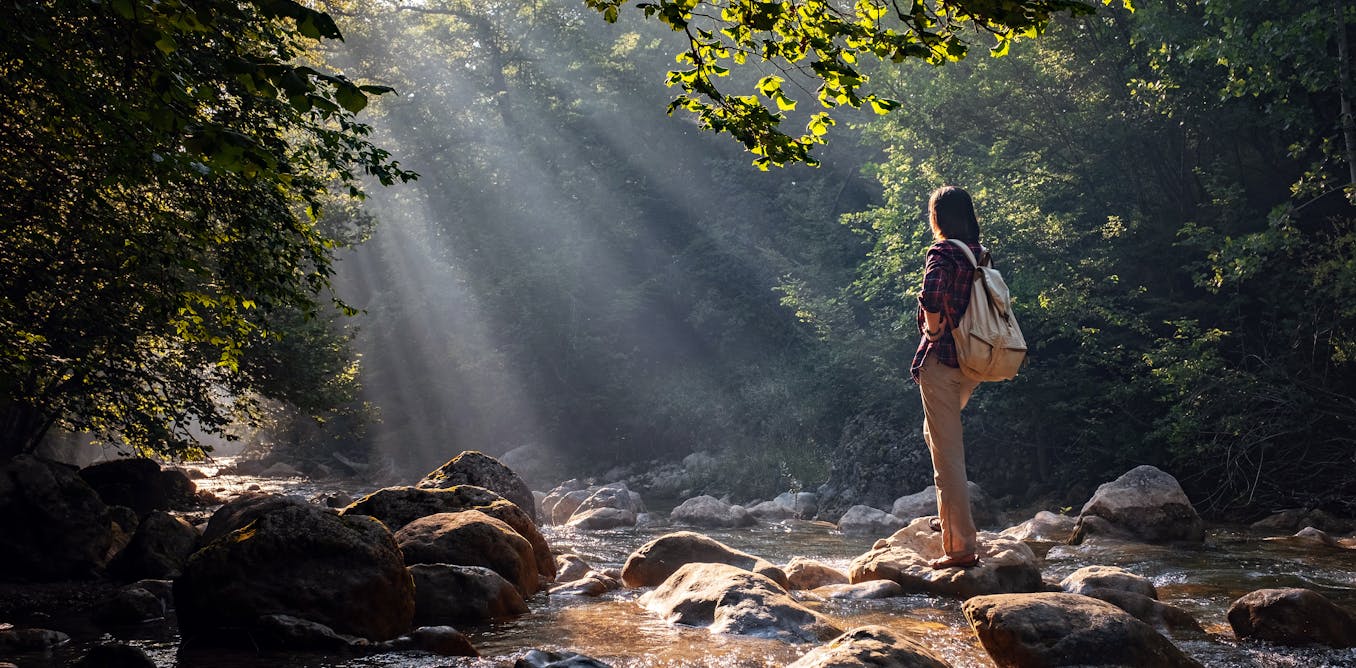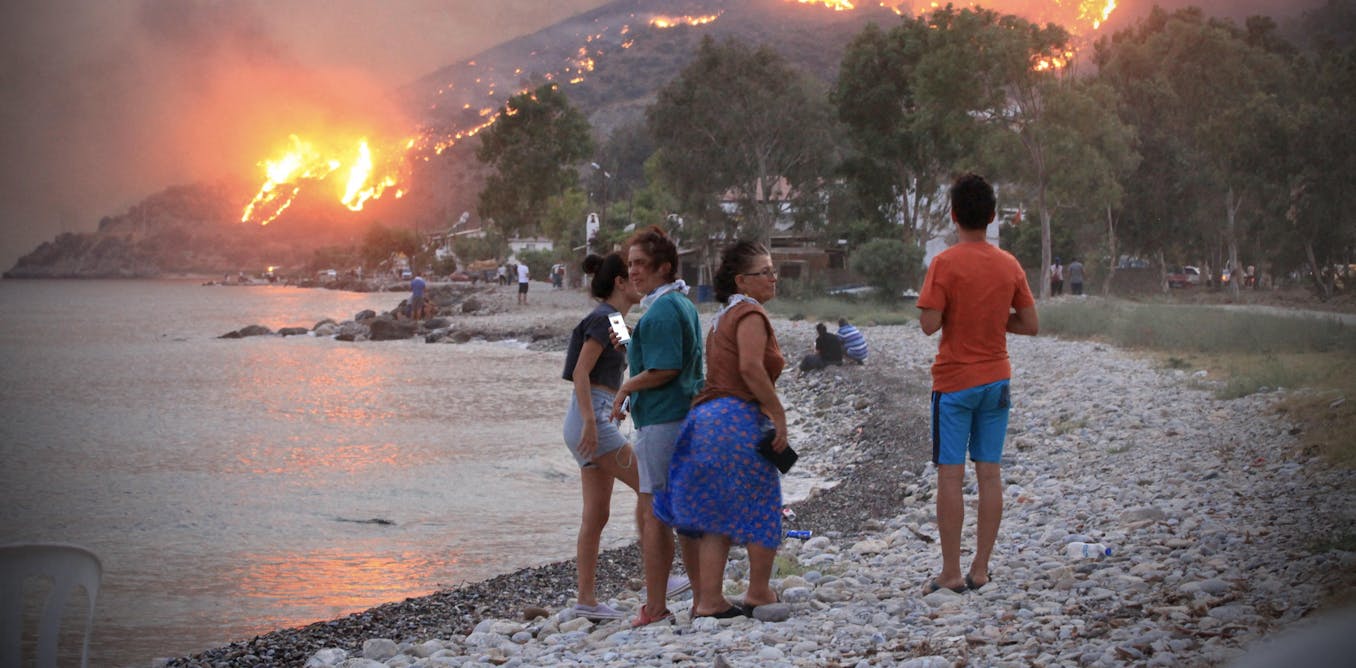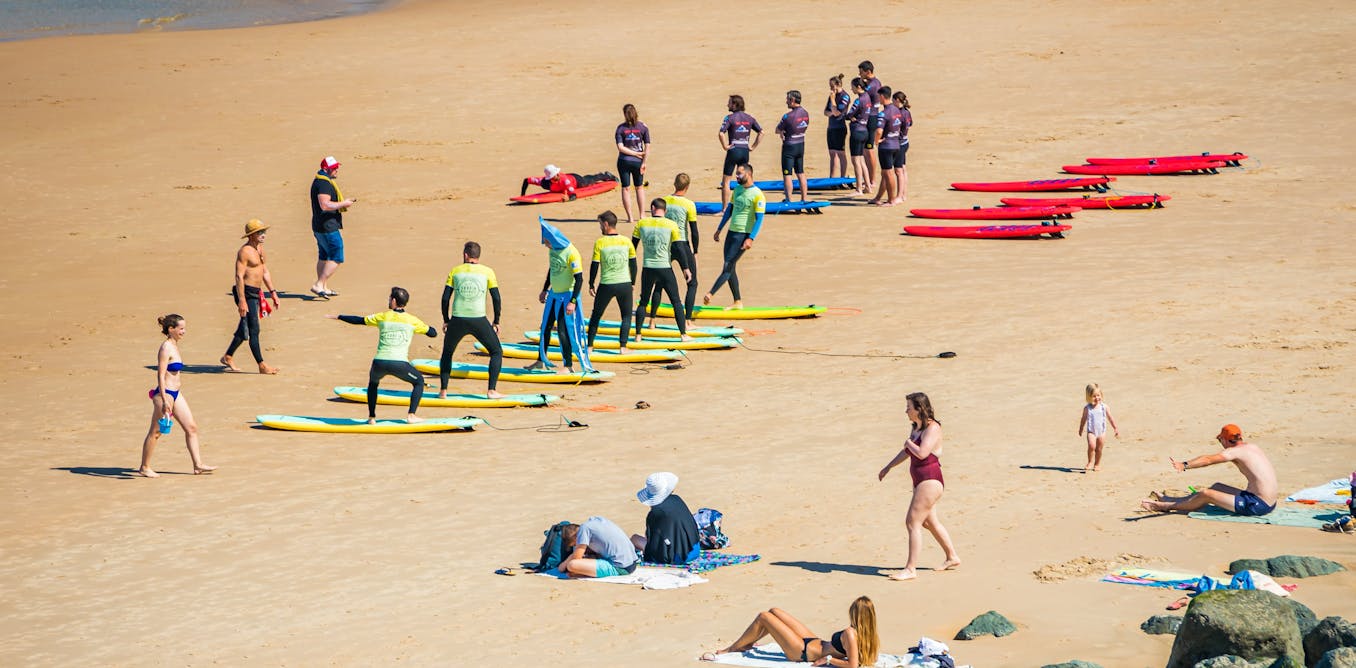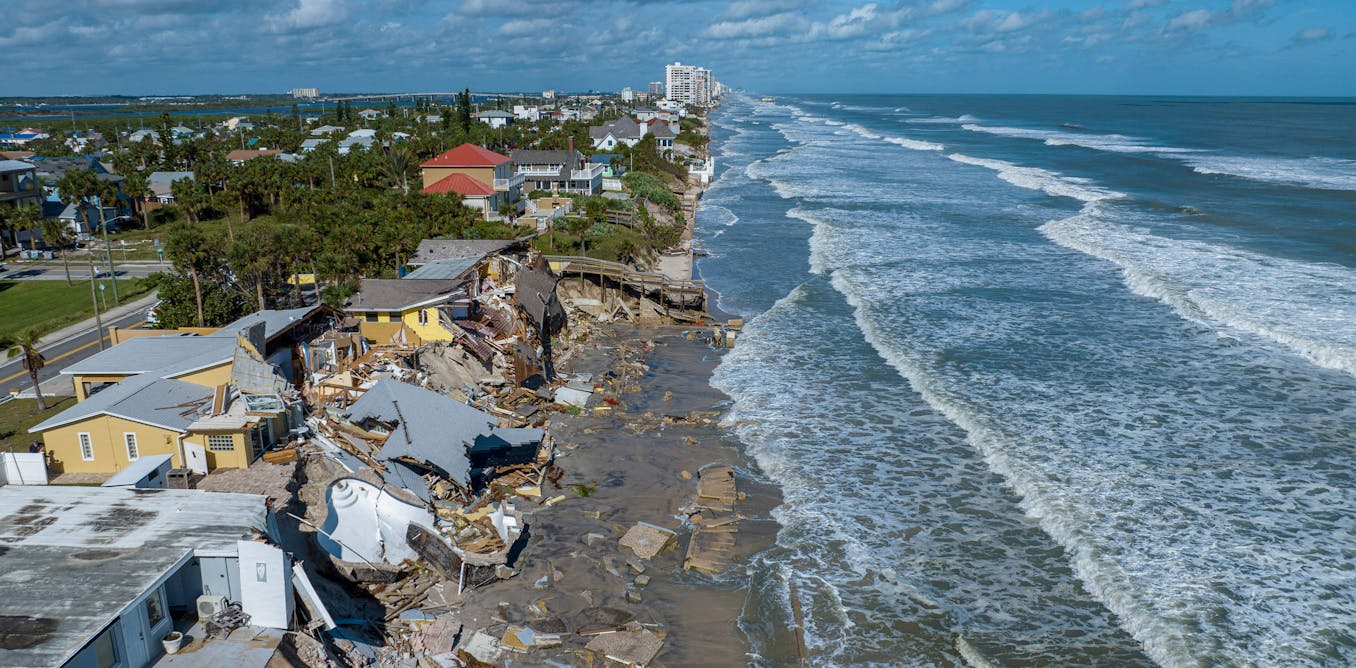Welcome to the Christ the Redeemer & Hike – Rio de Janeiro, Brazil Walking Tour. This immersive 4K60fps video takes you on a journey around the Christ the Redeemer statue, as well as the hike up the Corcovado Mountain along the Transcarioca Trail. Filmed on January 30th, 2023, you’ll experience the beauty of Rio de Janeiro up close.
The video includes a map of the walk and timestamps for various points of interest, allowing you to navigate the tour at your own pace. From the Paineiras Corcovado visitor center to the stunning viewpoints along the hike, you’ll get a comprehensive view of the entire experience.
The Christ the Redeemer statue, constructed between 1922 and 1931, features a 30-meter-high figure located at the peak of the 700-meter Corcovado Mountain in the Tijuca National Park. This iconic landmark is not only a symbol of Christianity but also a cultural icon of both Rio de Janeiro and Brazil.
The hike up the Corcovado Mountain offers breathtaking views of the surrounding landscape, including the Sugarloaf Mountain and the districts of Ipanema and Leblon. You’ll also get a glimpse of the Cemitério de São João Batista and learn about the history and construction of the statue.
The video captures the immersive experience with binaural audio, providing a 3-D stereo sound sensation for viewers. Closed captions with historical facts and descriptions are available in all languages, enriching the viewing experience.
Whether you’re planning a trip to Rio de Janeiro or simply want to explore the iconic landmarks from the comfort of your own home, this video offers an engaging and informative walking tour. Join us on this unforgettable journey through the beauty of Rio de Janeiro, Brazil.
Watch the video by Prowalk Tours
Welcome to Rio de Janeiro, Brazil! This is the former Paineiras Corcovada Hotel, built in 1884, which is now the visitor center for the Christ the Redeemer statue. Straight ahead is the ticket office. The ticket price for the statue, which includes a van ride, is $81.50R, which is about $16.42 USD.
We now have to walk through the upstairs area and will then exit the building on the opposite end. After exiting the building, visitors have to wait in line for a van ride to the top of the Corcovado Mountain.
Inside this green building, they take your photo which they try to sell to you before you get on the train to head down the mountain. The line moved pretty fast. There is a also a concession stand for the people standing in line.
The van takes visitors to the base of the statue near the train station. There are basically 4 ways visitors can reach the Christ the Redeemer statue on top of Mount Corcovado: taxi, train, hike or the official van.
This is the area where visitors from the train, vans or who hiked, all converge into one area. It can get very crowded. The most popular way to reach the statue is by train, which departs from the Cosme Velho railway station.
A round trip ticket costs R$97.50 ($19.64) and includes the entrance ticket to the statue. The trip takes about 25 minutes one way. Train tickets can be purchased online at https://www.tremdocorcovado.rio/.
The second most popular way to visit the statue is by the official van service which has pickup locations at Largo do Machado and Copacabana Beach. The price for an Official Van ride is currently R$81.50 ($16.42). You can purchase a ticket online or at the site where the van departs.
The website for the van service is https://ingressos.paineirascorcovado.com.br/ The third way to reach the statue is by taking an Uber or Taxi to the Paineiras Corcovado visitor center. From there, you will need to then purchase a ticket for the statue.
I took an Uber to get here. However, the driver told me Uber does not actually offer rides to the top because there are no people there to be picked up.
All visitors either take a van, train or hike down from the mountain. You will most likely NOT find a taxi or Uber waiting here. The fourth way to get here is by hiking up the Transcarioca Trail which starts down at the Parque Lage.
This video includes the entire 2-hour hike, which starts at time 37:05. I will share more information about the hike later in the video. My recommendation is to take an Uber up and the train back down.
Constructed between 1922 and 1931, the statue is 30 meters (98 ft) high, excluding its 8-meter (26 ft) pedestal. The statue was created by French-Polish sculptor Paul Landowski and built by Brazilian engineer Heitor da Silva Costa, in collaboration with French engineer Albert Caquot. The arms stretch 28 meters (92 ft) wide.
The statue has become a symbol for Christianity around the world, as well as becoming a cultural icon of both Rio de Janeiro and Brazil. The statue weighs 635 metric tons. The average block on the Great Pyramid of Giza weighs 2.5 metric tons.
The statue is located at the peak of the 700 meter (2,300 ft) Corcovada Mountain in the Tijuca National Park overlooking the city of Rio de Janeiro. The Vincentian Priest Pedro Maria Boss was the first to suggest placing a Christian monument on top of Mount Corcovada back in the mid-1850s.
The Catholic Circle of Rio made a second proposal for a landmark statue on the mountain in 1920. Straight ahead is the Sugarloaf mountain, opposite to the Botafogo beach.
Surgarloaf Mountain is 396 m (1,299 ft) above the harbor and is named for its resemblance to the traditional shape of concentrated refined loaf sugar. We are currently looking out towards the mouth of Guanabara Bay. Here we are looking towards Copacabana Beach.
The Catholic Circle of Rio group organized an event called Monument Week to attract donations and collect signatures to support building of the state. The organization was motivated by what they perceived as “Godlessness” in the society. The donations came mostly from Brazilian Catholics.
The designs considered for the “Statue of the Christ” included a representation of the Christian cross, a statue of Jesus with a globe in his hands, and a pedestal symbolizing the world. Here we are looking out towards to districts of Ipanema and Leblon. The lake is Lagoa Rodrigo de Freitas.
The statue is made of reinforced concrete (from Sweden) with an outer layer of soapstone. Construction took nine years, from 1922 to 1931, and cost the equivalent of US$250,000 (equivalent to $4,100,000 in 2022). The monument first opened on October 12, 1931.
Between the peaks of the two green hills there is a large cemetery called Cemitério de São João Batista. In 2006, a chapel was built under the statue, allowing Catholics to hold baptisms and weddings there. The chapel is named after Brazil’s patron saint, Our Lady of the Apparition.
Lightning struck the statue during a violent thunderstorm on February 10, 2008, causing some damage to the fingers, head and eyebrows. The Rio de Janeiro state government initiated a restoration effort to replace some of the outer soapstone layers and repair the lightning rods on the statue.
Lightning damaged it again on January 17, 2014, dislodging a finger on the right hand. Maintenance work needs to be conducted periodically because of the strong winds and erosion to which the statue is exposed, as well as lightning strikes.[
The original pale stone is no longer available in sufficient quantity, and replacement stones are increasingly darker in hue. I filmed a hike up to the statue on the day before. The sky was clear when I started the hike, but when I got here, the statue was covered in clouds.
In fact, this was the only clear day I had in the two weeks I spent here in Rio. I didn’t plan to have to come up here twice, and unfortunately, this second trip used up half my day, which had the best weather on my trip.
Even in the clouds, helicopters were constantly circling the statue. Unfortunately, those people paid a lot of money just to see clouds. 🙂 This is the cafe where you can get drinks and snacks. To get the US dollar value, just divide by 5.
In general, food and drinks are very inexpensive here in Rio. Vendors on the street typically sell a bottle of water for $R3 or $0.60. Since I took an Uber here to the statue, I am going to leave on the train which ends at the Cosme Velho station.
The Cosme Velho station is hotspot for tourists, taxi drivers, street vendors, and tour guides….in other words, guard your wallet. Speaking of safety here in Rio, while planning my trip I heard and read a lot of horror stories about the crime here in Rio.
Many peopled warned me not to go, that the town is overrun by violent gangs, that I would get mugged, that I needed to be extremely careful, etc. These warnings put me on high alert during my entire visit.
However, I had no problems during my visit to Rio. I did not feel threatened at any time nor did I witness anything illegal going on. Tickets for the train can be purchased here. A one-way ticket costs $R33.50 for $6.75.
Here is where the first part of this tour ends. We will begin the hike in a moment, starting at the Parque Lage. It looked like a beautiful clear day to film the hike. The statue is clearly visible at the top of Mount Corcovado.
Parque Henrique Lage is a public park located in the Jardim Botânico neighborhood at the foot of the Corcovado. The palace here on the property was built in the 19th century in an eclectic Roman style. The palace is available for tours, but reservations must be made online in advance.
I had planned to film the palace first thing the following morning, but I ended up having to film the Christ statue a second time instead. You may remember the interior of the palace from the music video, “Beautiful,” by Snoop Dogg and Pharrell Williams.
The park is 128 acres (52 hectares) of lush forest with several species of the Atlantic Forest. Outside the Palace the Parque lage has side gardens composed of a huge forest consisting of plants and flowers with picturesque paths that pass by palm trees, bridges, caves.
Originally, this land was the site of a sugar mill during the time of Colonial Brazil in the mid-16th century. The governor of Rio de Janeiro at the time acquired the property and built a sugar mill in the city.
From the nineteenth century, the place was the residence of nobles and aristocrats (the example of Rodrigo de Freitas Mello e Castro). In 1859, the property, which was already titled as a park, passed to the possession of Antonio Martins Lage.
Antonio Martins Lage passed the property on to his three children, one of which was Henrique Lage. It was Henrique who transformed the park into what we see today and for whom the park is named after.
In 1920s Henrique started a project of remodeling the mansion here on the property to please his wife Gabriella Besanzoni, an Italian opera singer. The work was done by an Italian architect Mario Vodrel.
Gabriela turned Lage palace into a center of social life of Rio de Janeiro, organizing luxurious parties for the most prominent representatives of Rio’s society. In 1960s Parque Lage became a public park and in 1975 Escola de Artes Visuais do Parque Lage was opened.
The park was recognized as Historical and Cultural Heritage of the City of Rio de Janeiro in 1957, for composing important historical memory of the city. The park is free to enter and is open everyday between 8am and 5pm.
The entrance to the trail up to the Christ the Redeemer statue is just up ahead. The trail is free to enter but you must provide your name and other information before starting the trail.
The trail is approximately 2.5 miles long (4 km) and takes about 2 hours to reach the statue. During the hike, it is possible to see monkeys and snakes. I saw a large snake while taking a break and resting, so it is unfortunately not included in this video.
The trail is clearly marked with these yellow markers. Prior to filming the hike, I read online that the trail is not safe and that it is not recommended to walk along. There have been muggings and robberies on the trail in the past.
However, I did not have any problems during the hike and felt safe the entire time. I think most internet travel bloggers tend to repeat the same information and want to have an impact on their readers and therefore the claims that the trail is unsafe, are over exaggerated.
This assertion similarly applies to the city of Rio. Numerous online sources caution their readers about the city’s perceived lack of safety, yet these admonitions often perpetuate stereotypes without substantiated firsthand evidence.
I walked alone all around the city carrying my camera and did not encounter any problems. However, I did not enter the favelas (the slums) or go out late at night. My point is, do not be afraid to come to Rio.
Simply demonstrate basic caution and situational awareness, like you would in any big city, and you’ll be fine. This trail continues through dense forest nearly the entire way. However, the last 800 meters is along the road leading up to the statue.
There are no areas to fill up your water bottle along the way, until you reach the cafe at the statue. Many websites with information about the trail refer to a section where you have to climb up rocks along a metal ladder rungs.
I never saw this part of the trail. I don’t know if the trail has been rerouted, but the trail was an easy hike the entire way. There are just a few rocks you have to climb up near a waterfall, but other than that, the trail is easy to hike.
I know we have just started the trail, but here is my recommendation if you are visiting Rio…skip the hike! 🙂 If you are visiting Rio, then your time is valuable and this hike is not a great use of your time. Take an Uber to the top and enjoy the time you saved.
In case you are wondering, I did film the statue at the end of this hike which is different from the footage seen at the beginning of this video. If you want to skip ahead to the statue, it starts at time 2:17:33. The first view of the statue is at 2:20:42.
There are waterfalls and other interesting things to see along the way, and I have included those in the timestamps of this video. There are three different waterfalls along this hike, and we will see them all in the next 10 minutes.
If you are enjoying this tour, please leave a LIKE on this video and SHARE it with a friend. Thank you! The trail continues on the other side of the tracks. We will be at the steps leading up to the statue in just 12 minutes! Almost there!
The cost to visit the statue is $R55, or $11. They only take cash. The train is to our left. To our right is the van drop-off zone. ..and up these steps is the statue…covered in clouds.
Thanks for watching! If you enjoyed this tour, please leave a LIKE on the video and SHARE it with a friend. Thank you!
Video “Christ the Redeemer & Hike – Rio de Janeiro, Brazil Walking Tour – 4K60fps with Captions” was uploaded on 02/10/2024. Watch all the latest Videos by Prowalk Tours on Gretopia





































